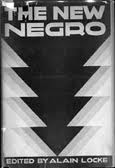In the 1870s this displaced population of African American migrants began to occupy the Tenderloin area of Manhattan. According to a digital project published online by the Schomburg Center for Research in Black Culture, the Tenderloin was what is known today as Midtown. This area “extended roughly from 20th Street to 53rd Street between Fifth Avenue and Seventh Avenue” (BlackNYs). Although Harlem is historically known for having famous Jazz clubs, the first Jazz band to appear in New York appeared in a black owned hotel called The Marshall, which was located in the Tenderloin.

This was stated in James Weldon Johnson’s Black Manhattan. “The Marshall” on 53rd street was frequented by black and white musicians and celebrities. As well as writers and artists. It was a place where people of different races could meet and “socialize on equal terms” (Kirkeby). The Marshall was part of the heart of the Tenderloin. It was a hub for artistic and intellectual mingling and new ideas.
From this place came music and other expressions of African American culture. Even the idea that became the NAACP was negotiated at tables in The Marshall ( Kirkeby). The Marshall was truly an expression of the New Negro, as it created a space where blacks and whites could have intellectual conversation with one another. This allowed the black world to peek into the white society which is what Locke claimed to be essential for the black individual to strategically understand their positionality in the racist world. Additionally, it offered a space for novelty thinking, which involved new ways to uplift the race, as well as a way to spread both visual and performing arts within the community.
But this angered white New York. Complaints by a white committee were made about the “mixing of races” and interracial dating. In 1913 a letter from the Mayor was sent to the Police commissioner and spies were sent to The Marshall to try and find the owner, James.L.Marshall in some illegal act (Kirkeby). The Tenderloin along with San Juan Hill were predominately black occupied areas, the majority of the population being African American and Caribbean. However, the dwindling of the Tenderloin began in 1910 when most of the black occupied housing was destroyed to make way for Pennsylvania Station.



